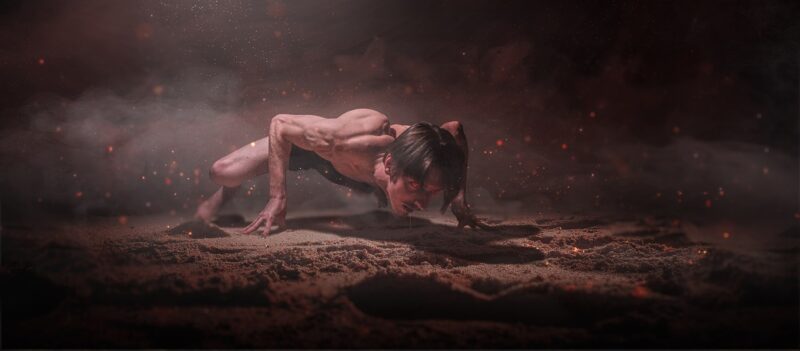The Most Terrifying Monsters in Horror Movies and What They Represent
November 16, 2024

Horror movies have been a staple of cinema for decades, enthralling audiences with their unique blend of fear, suspense, and the exploration of humanity’s deepest anxieties. At the heart of these films lie the monsters—figures that embody psychological conflicts, societal fears, and existential threats. In this article, we will delve into some of the most terrifying monsters in horror movies, exploring both their sinister allure and the deeper meanings they represent.
—
### 1. The Alien in “Alien” (1979)
Ridley Scott’s “Alien” introduced one of the most iconic monsters in film history. The xenomorph, with its unearthly form and deadly instincts, represents our primal fear of the unknown, particularly regarding space exploration and encounters with extraterrestrial life.
**Key Interpretation:** The monster symbolizes the existential dread humanity feels when confronted with the vast unknown of space, amplifying contemporary anxieties surrounding technology and isolation.
—
### 2. Freddy Krueger in “A Nightmare on Elm Street” (1984)
Freddy Krueger, the dream-stalking killer, embodies the fear of childhood trauma and repressed guilt. His ability to invade dreams makes him a unique representation of how unresolved fears can manifest and haunt individuals.
**Key Interpretation:** He represents the lingering psychological effects of traumatic experiences, particularly those related to parents and childhood, highlighting how these unresolved issues can dominate one’s subconscious.
—
### 3. The Thing in “The Thing” (1982)
John Carpenter’s “The Thing” showcases a creature capable of perfectly imitating any living being. This monster reflects paranoia and the fear of losing one’s identity—the anxiety that trust can lead to betrayal.
**Key Interpretation:** The Thing represents the dynamics of fear and suspicion in human relationships, particularly in a confined space where survival instincts heighten vulnerability and distrust.
—
### 4. Michael Myers in “Halloween” (1978)
The faceless killer of “Halloween,” Michael Myers, embodies pure, unstoppable evil and is often interpreted as a representation of the unknown threats lurking within society, particularly in suburban contexts. His blank face and relentless pursuit make him unnervingly relatable yet profoundly fear-inducing.
**Key Interpretation:** Myers symbolizes the lurking danger within everyday life, suggesting that evil can exist just beneath the surface of normalcy, lurking in familiar settings and faces.
—
### 5. The Babadook in “The Babadook” (2014)
In Jennifer Kent’s psychological horror film, the Babadook represents grief and depression, manifested as a monster that torments the protagonist, Amelia. This creation emphasizes how unresolved emotions can take a terrifying shape.
**Key Interpretation:** The Babadook embodies the struggles of facing personal demons and the consequences of suppressing emotional pain, illustrating that confronting rather than ignoring grief is essential for healing.
—
### 6. Pennywise in “It” (2017)
Based on Stephen King’s novel, Pennywise the Dancing Clown reflects childhood anxieties and the fears that lurk in the shadows of innocent youth. His ability to appear as whatever the children fear most intensifies his terrifying nature.
**Key Interpretation:** Pennywise symbolizes the fears of growing up, especially the loss of innocence and the realization that danger can appear in friendly forms. He serves as a reminder that facing fears is a crucial part of maturation.
—
### 7. The Zombie in “Night of the Living Dead” (1968)
George A. Romero’s zombies represent both social commentary and the fear of societal collapse. Their relentless march symbolizes the loss of individuality and humanity in a consumer-driven society.
**Key Interpretation:** Zombies act as metaphors for mindless consumption and the dangers of conformity, illustrating how fear can drive people to monstrous behavior in times of chaos.
—
### 8. The Creeper in “Jeepers Creepers” (2001)
The Creeper, a creature that emerges every 23 years to feed on human body parts, symbolizes the predatory nature of evil and the inevitability of facing one’s mortality. It foreshadows the fear of becoming prey to an unstoppable force.
**Key Interpretation:** The Creeper represents the unchecked forces of nature and the existential dread of being hunted, encouraging viewers to confront their mortality and the limits of control over life’s unpredictable aspects.
—
### Conclusion
The monsters of horror cinema often reflect deeper psychological and societal fears, serving as mirrors that reveal the complexities and vulnerabilities of the human condition. From childhood trauma to existential dread, these terrifying creatures allow us to confront our innate fears from the safety of a movie theater. By examining what these monsters represent, we can better understand both ourselves and the world around us.
As we continue to consume horror films, we should reflect on the rich tapestry of anxieties they embody, providing an opportunity for catharsis and understanding through fear.
—
Whether you are a horror aficionado or new to the genre, recognizing the underlying meanings of these monsters can enhance your enjoyment and appreciation of this compelling art form.







